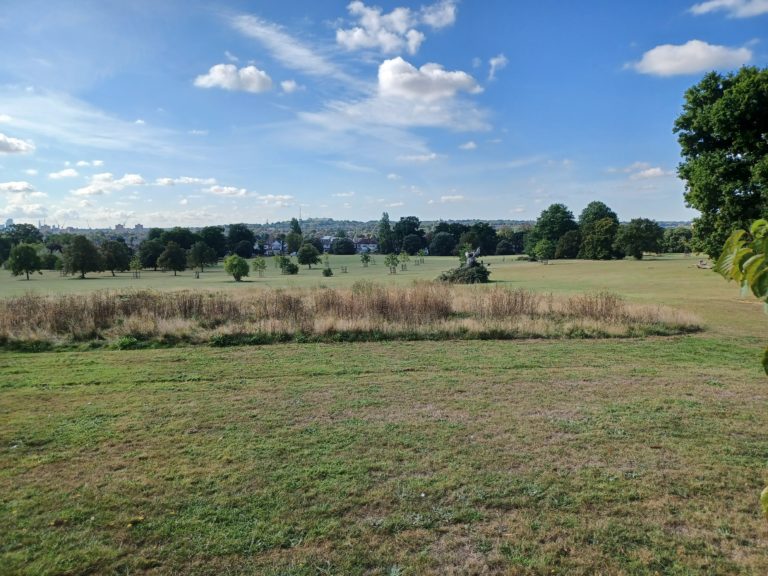In the latest instalment of the Historic Environment Forum’s Sector Resilience Interviews series focussed on Climate Change, we hear from Sebastian West – Principal Landscape Manager at Stephenson Halliday, an RSK company.
Tell us a bit about yourself and your role.
I’m Sebastian West, a Chartered Principal Landscape Manager at Stephenson Halliday, an RSK company, who leads our historic landscape and parks consultancy services. We provide comprehensive environmental planning, landscape architecture and graphics services across the UK. Working alongside other specialists in the wider RSK Group, we create landscape design, management and planning solutions for all kinds of historic landscapes, from feasibility to construction management, site management and maintenance.
What can you tell us about Stephenson Halliday, RSK’s climate resilience work? What does it aim to achieve?
Recently, seven Parkland Management Plans (PMPs) were produced for historic parklands within Enfield, north London. Several parks formed part of the former royal hunting ground of Enfield Chase. The parks included the setting of Grade I buildings such as C17 Forty Hall with the long lost Henry VIII palace of Elsyng within the park, the Grade I Nash designed C18 neo-classical villa at Grovelands Park with its surrounding Humphry Repton designed landscape and Trent Park, one of the grandest inter-war country houses in England.
The PMPs formed part of an application for a Countryside Stewardship Feasibility Study (PA2) and we looked to achieve the best outcome for the historic and natural environment across the borough. The application supported the Landscape Recovery scheme, for which Enfield is one of 22 pilot projects around the country.
Historic assets, sightlines and landscape design iterations were detailed to inform the masterplans. The PMPs further highlighted the importance of restoring and creating mosaic habitats that are vital for climate adaptation, flood risk, carbon sequestration and water quality improvements, as well as helping to reconnect people with their local and historic environment.
How does this contribute to climate resilience in the heritage sector?
PMPs should have clarity, conciseness and good structure. It is vital to communicate information effectively to stakeholders. Integrating climate change and sustainability factors within the issues/risks, policies, action plan and masterplan production process is also important for long-term resilience of open space. Parks should not be looked at in isolation but as part of wider networks, therefore benefitting nature recovery and avoiding further habitat fragmentation and inequalities of access.
How will you know this work has been successful?
Success for the seven historic parks across Enfield includes their enhancement through capital interventions and sustainable management approaches, with a better understanding for key stakeholders of the parks’ rich history and significance. The baseline work will inform the landscape-scale Landscape Recovery project. An important success will be the removal of several heritage assets from the Heritage at Risk Register, alongside environmental improvements.
The PMPs have a life span of ten years and success will be measured during the five year review, which will also ensure all relevant information remains up to date.

How can colleagues find out more?
The PMPs provide a roadmap for Enfield Council. The implementation of robust PMPs, conservation plans, ecosystem service valuations and green infrastructure strategies can inform funding options and enhancement considerations for the resilience of open space in the context of the climate and ecological crisis. This is something we and the wider RSK Group are closely involved with. Please do get in touch with me at info@stephenson-halliday.com if you require further information or wish to discuss. Further information about our climate change and resilience work is available on our website at stephenson-halliday.com.
Overall, what do you think is most crucial for ensuring a resilient heritage sector?
Parks and historic landscapes need continued safeguarding through policy and planning. Crucially, being able to understand and articulate significance is key within the heritage sector. If significance levels are not defined or understood, there is the potential for inappropriate development and harm. There are some great opportunities for high impact and lower maintenance parks and landscapes that provide greater value for wildlife, particularly through nature-based solutions and regenerative approaches to landscape design and management.
This Sector Resilience interview was shared by Sebastian as part of our Heritage Sector Resilience Plan activities.
If you’d like to contribute an interview as part of the series, follow the link below to find out more:

